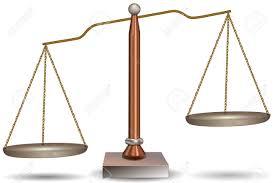Balls are fake

A shop was delivering 3 1 5 − 2 balls. Some children placed a fake ball, perfectly identical to the original balls which is heavier than original ones. Authorities came to know it and brought an accurate weighing scale on which load is placed on both sides. So how many minimum number of trials are required to identify the fake ball?
This section requires Javascript.
You are seeing this because something didn't load right. We suggest you, (a) try
refreshing the page, (b) enabling javascript if it is disabled on your browser and,
finally, (c)
loading the
non-javascript version of this page
. We're sorry about the hassle.
2 solutions
Simply wow solution (+1)
Great solution +1. Can you generalise it i.e. for n trials?
Log in to reply
For a pile with 3 n − 2 balls, we will need n trials to find the bomb. Is this what you're looking for?
In general, we'd need ⌈ lo g 3 n ⌉ comparisons.
Log in to reply
I want proof. Ik that
Log in to reply
@Prince Loomba – With every comparison, you are narrowing down the search space by a factor of 3. There can be at most ⌈ lo g 3 n ⌉ such comparisons.
Nice Solution...+1
I suppose this argument is correct though you didn't made explicit in your proof why the procedure used gives you the minimum number of steps.
Just when that is made explicit you can finally conclude that you obtain the bomb in the least number of moves and it's important so it should be let implicit anyway.
Btw , there is also another cute problem with weightings which is also interesting to analyze I suppose anyway . This one asks what is the minimum number of weightings if you know that the fake ball is either heavier or lighter but don't know which of two anyway.
That problem is a little bit harder maybe than this one as it's procedure isn't as direct but may help for arriving at very general understanding of problems like this one anyway. It's also interesting to analyze different procedures and their optimal time compared with one another.
Nonetheless it's not a very very hard problem so maybe it's not all that interesting.
And cute solution btw anyway.
Neice Paris?
For those wanting proof that Hung Woei Neoh's solution is the smallest:
The balance only can have 3 results of each weighing: "Right-side is heavier, left-side is heavier, and both are equal"
Therefore, no matter what way how we consider our results, since there are only 3 pieces of information possible to obtain, we can, at most, separate the balls into 3 groups. The most efficient method of doing this, if we want to reduce possibilities to 1, is to split them into equally-sized groups. Otherwise, there will be a chance of having the bomb in the biggest group, and since we are assuming the worst possible scenario, there will always be a bomb in the biggest group.
Hope that makes sense!
Relevant wiki: Information Compression
For every single trial, we divide the pile into 3 groups. We measure the two groups with the same number of balls. If one is heavier, the bomb is in there; if both have the same mass, then the unmeasured group will have the bomb.
First trial
Divide into 3 1 4 , 3 1 4 − 1 , 3 1 4 − 1 , measure the two groups with 3 1 4 − 1 balls
Second trial
Third trial
n th trial, n ≥ 4
Notice that when we reach n = 1 5 :
1 5 th trial
Therefore, we can see that a minimum of 1 5 trials is required to locate the bomb